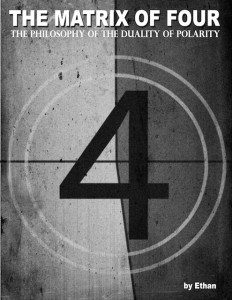Contributing Writer for Wake Up World
Breath is the basis of all life. Breath is also the basis of all meditation and meditative movement. Breath is the primary manner in which we all obtain life energy. The other three in metaphysical understanding are water, food and prana or chi. The most important concept to understand about breath and meditative movement is that one moves in coordination with the breath. One moves in and out of postures with the breath and one deepens and lengthens postures in coordination with the breath. Inhalations equate to tension whereas exhalations equate to relaxation and release.
There are four important aspects of meditative breath. It is important to breathe slowly, deeply, steadily and consciously. It’s said most people breathe wrong. Most people breathe either from high, mid or low points. A complete yogi breath is a cyclical movement beginning from low point moving like a wave. Meditative movement leads to proper cyclical, complete breath.
Balanced breathing is utilized most frequently. Balanced breathing means the four parts to one breath cycle are equalized. The inhalations and exhalations are the same length of time to each other and the pause full and pause empty are the same length of time to each other too. For example 8 seconds in, 2 second pause, 8 seconds out, 2 second pause is an example of steady balanced breath. Meditation practitioners from long ago would count the breath not in seconds, but heartbeats.
Balanced breath is beneficial to balancing one’s energy, often all we need. As one masters balanced breath one can implement new patterns to enhance energy movement in four basic patterns beyond balanced breathing similar conceptually to the depiction of the Yin Yang mandala. Unlike balanced breath these forms build and release energy in specific ways. There is the enhancement and lengthening of the pause full, in/pause/out patter for building Yin energy. There is the enhancement of pause empty, in/out/pause for Yang energy. Then a pause is inserted midway between either the inhale or exhale for energy movement, in/pause/in/out for Yin and lastly in/out/pause/out for Yang.
There are innumerable variations of meditative breath, however in most all meditations awareness of the matrix of meditative breath is a primarily important perception. Some more developed meditation practitioners move beyond focus on the breath, however even masters come back to and start with the breath. For the rest of us focus on the matrix of breath can calm the distracted monkey mind that swings from vine to vine, thought to thought. Trouble in meditation equates to, in general having a full mind, perceiving the breath allows one to be alternatively mindful so as to begin and develop meditation.
Meditation is mindfulness — the fullness of mind in the present. Whether distracted or focused, whether in still or moving meditation or in daily life, simply being mindful of the breath can connect mind and body. It is especially important to simply realize the four parts to every breath cycle and the four aspects of meditative breath.
The Matrix of Four
 Matrix of Four: the Philosophy of the Duality of Polarity is an exploration of our consciousness, and presents a formula to develop our consciousness and surpass the limitations of traditional political and social constructs. In this work, Ethan relates and explains correlations between the four seasons, Om and a myriad of esoteric and exoteric ideas on consciousness to inspire creative thinking and being. He also explores mathematical and philosophical concepts to engage a higher thinking and being, verified using universality and human traditions beginning with the four operations of arithmetic, referencing the four archetypal characters in Plato’s The Allegory of the Cave, and much more.
Matrix of Four: the Philosophy of the Duality of Polarity is an exploration of our consciousness, and presents a formula to develop our consciousness and surpass the limitations of traditional political and social constructs. In this work, Ethan relates and explains correlations between the four seasons, Om and a myriad of esoteric and exoteric ideas on consciousness to inspire creative thinking and being. He also explores mathematical and philosophical concepts to engage a higher thinking and being, verified using universality and human traditions beginning with the four operations of arithmetic, referencing the four archetypal characters in Plato’s The Allegory of the Cave, and much more.
Matrix of Four: the Philosophy of the Duality of Polarity is available here on Amazon.
Recommended articles by Ethan Indigo Smith:
- Tibetan Rites of Rejuvenation: a Guide to Meditation and Breath
- Understanding Ascension: The Geometry of Energy
- The Mandala: The Sacred Geometry of Meditation
- The Common Origins of Religions and Theology
- Aum Mani Padme Hum: The Integration of Duality and Polarity
- Guardians of the Earth Unite! American Indian Prophecy, The Medicine Wheel, and The Four Sacred Directions
- The Spiritual Golden Rule
- Meditation Comprehension for the Youth
- Meditation 108: A Guide to Meditating for the Infant Practitioner
- Walls and Wars – Overcoming the Instincts of Hive Consciousness
About the author:
 Activist, author and Tai Chi teacher Ethan Indigo Smith was born on a farm in Maine and lived in Manhattan for a number of years before migrating west to Mendocino, California. Guided by a keen sense of integrity and humanity, Ethan’s work is both deeply connected and extremely insightful, blending philosophy, politics, activism, spirituality, meditation and a unique sense of humour.
Activist, author and Tai Chi teacher Ethan Indigo Smith was born on a farm in Maine and lived in Manhattan for a number of years before migrating west to Mendocino, California. Guided by a keen sense of integrity and humanity, Ethan’s work is both deeply connected and extremely insightful, blending philosophy, politics, activism, spirituality, meditation and a unique sense of humour.
Ethan’s publications include:
- The Complete Patriot’s Guide to Oligarchical Collectivism, an insightful exploration of history, philosophy and contemporary politics.
- Tibetan Fusion a book of simple meditative practices and movements that can help you access and balance your energy.
- The Little Green Book of Revolution an inspirational book based on ideas of peaceful revolution, historical activism and caring for the Earth like Native Americans.
- The Matrix of Four, The Philosophy of the Duality of Polarity on the subject of the development of individual consciousness.
- 108 Steps to Be in The Zone a set of 108 meditative practices and steps toward self discovery and individual betterment, including techniques to develop balance, transmute sexual energy and better the self.
- The controversial book, Terra-ist Letters, a work that humorously contrasts the very serious issues of global nuclear experimentation promotion and global marijuana prohibition.
For more information, visit Ethan on Facebook and check out Ethan’s author page on Amazon.

If you've found value in our articles, we invite you to support the release of our brand-new book, "Gratitude Practices for Kids: A Practical Guide for Adults to Instill a Spirit of Appreciation and Positivity in the Next Generation."
"Gratitude Practices for Kids" brings together over 25 innovative and accessible practices designed to enhance gratitude in everyday life. This comprehensive guide is backed by 17 scientific studies, ensuring each concept is grounded in research, underscoring our commitment to nurturing growth, emotional intelligence, and positive interactions between adults and children.
We encourage you to opt for the paperback version to celebrate this new release. Dive into its fresh pages away from digital distractions, allowing you to immerse yourself in the transformative practices it offers.
Over recent years, Wake Up World has faced significant online censorship, which has impacted our financial ability to operate. Moving into book publishing represents a strategic step to secure the ongoing funds needed to continue our mission. By purchasing Gratitude for Kids, you help us keep our content free and accessible to everyone, avoiding needing a paywall. With over 8,500 articles published in the last 13 years, we remain dedicated to keeping our valuable content open to all.








